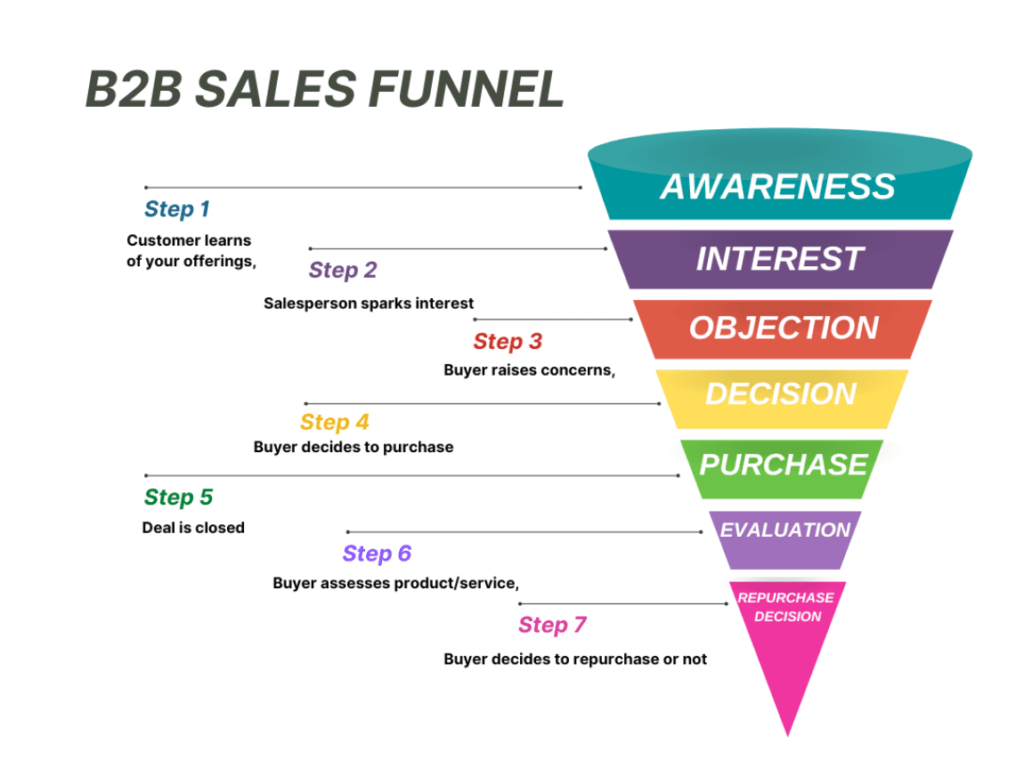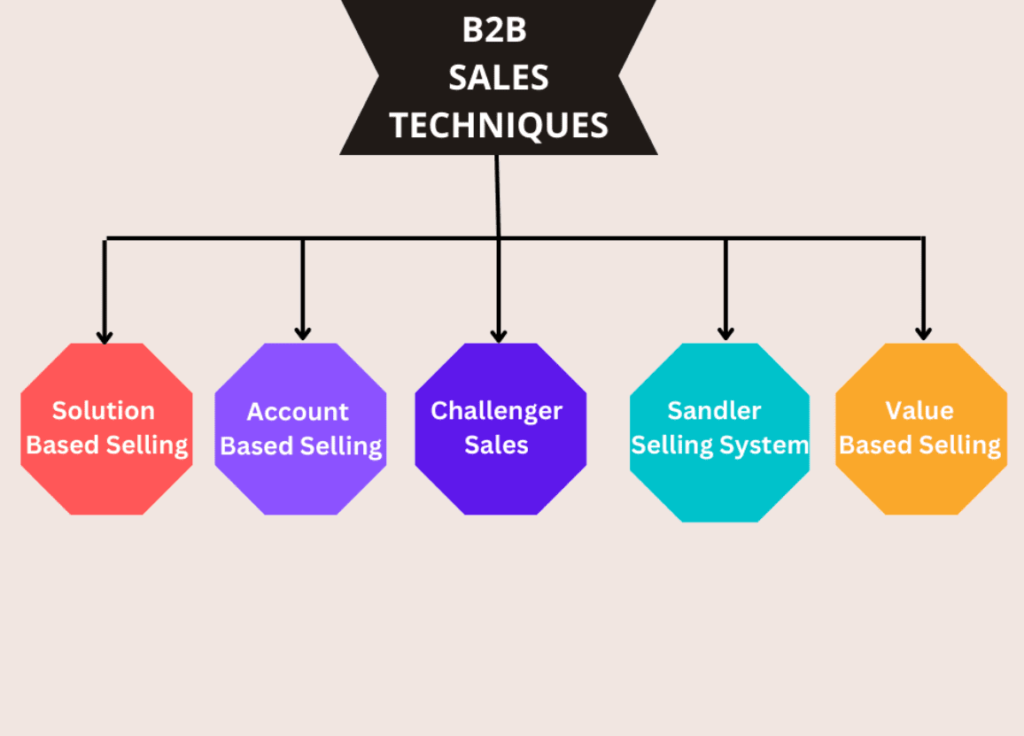
B2B selling presents unique challenges. Deal cycles are longer, there are more stakeholders involved in the decision making process, & sellers are expected to have expert level knowledge about their products & services. In the battleground of B2B sales, salespeople face professional, demanding buyers, multiple decision-makers, lengthy closing times, & complex sales cycles.
To get valuable free insights delived straight to your inbox

B2B sales refer to the transaction of goods or services between businesses. These sales are characterized by large deal sizes & high sales volume, making a comprehensive understanding of the target business, their requirements, obstacles, & industry crucial. The sales process in B2B typically takes longer time & involves several key decision makers with differing motivations.
The B2B sales process involves a sequence of steps designed to guide a business buyer from initial discovery to successful closure. A strategic approach & the use of tailored sales techniques for each target persona are crucial.The number of steps in a B2B sales process may vary, with some organisations having as few as five while others have up to eight. An example of a typical 8-step sales process includes:
Effective sales representatives possess a strong understanding of their offerings & how they align with specific markets. They are able to effectively communicate their value proposition to their appropriate customers.
The process of prospecting involves locating new potential customers who have a requirement or potential use for your products or services.
Sales professionals can utilize a combination of online channels, such as LinkedIn, Quora, or digital marketing, & offline methods, such as conferences, trade shows, referrals, or cold calls, to identify new prospects.
After identifying new, top-notch leads, sales representatives connect with them to determine their purchasing capacity. The sales process, especially for B2B, can be both costly & time-intensive, so it’s crucial to screen leads at the beginning to maximise efficiency.
In B2B sales, it’s essential for sales representatives to understand the prospect’s company, needs, challenges, & industry developments. Research plays a crucial role in B2B sales due to its intricate nature & the professional background of buyers.
The pitching process may involve presentations, product demonstrations, or a combination of various techniques. It is a crucial stage in transforming a B2B prospect into a customer.
In B2B sales, buyers make informed decisions based on the value your company can bring to theirs. Sales representatives should use the qualification & research phases to anticipate any potential objections from prospects. The more effectively a sales rep can address objections, the more trust they can build with prospects.
The closing stage may involve submitting a quote, negotiating pricing, or signing a contract, depending on the situation.
B2B sales are often a continuous process, with a focus on securing repeat business. Sales representatives should cultivate & maintain relationships with clients even after deals have been closed. This may involve following up on product & service delivery, providing after-sales support, or regularly checking in for cross-selling & upselling opportunities.
A B2B sales funnel is the customer’s journey through the sales process, which can have multiple stages. In today’s world, the customer journey is non-linear & involves significant research & discussion before a salesperson becomes involved.
The typical B2B sales funnel includes:
Outreach from sales reps can positively impact the repurchase decision.

Understanding these differences is crucial for adopting effective sales tactics & marketing strategies for each.
B2B sales require a tailored sales strategy, repeatable steps, & constant improvement. To make B2B sales, understand the target customer, their purchasing process, & align your approach accordingly.
Make the sales process fast, convenient, & transparent. Salespeople must have deep knowledge of what they sell & research the customer, including stakeholders, markets, & pain points. Personalise your pitch & consider automating parts of the sales cycle for efficiency.
Within a basic sales process, sales teams can employ one or more of the following sales techniques to increase their chances of succeeding:

No matter the sales techniques used, all B2B salespeople can benefit from the following tips:
In conclusion, success in B2B sales requires a combination of effective communication, relationship-building, and a deep understanding of your customer’s needs and goals. By following these tips, you can increase your chances of success and build a strong, long-lasting relationship with your customers
Inside B2B sales involves reps working remotely, while outside sales involves reps in the field. Outside sales offers a personal touch, leading to higher sales & order values, but it’s also more costly & time-consuming. On the other hand, inside sales is cost-effective & offers greater control & visibility for managers. With advancements in communication technology, remote sales are becoming more popular, especially since the pandemic.
The B2B sales landscape has evolved with the rise of technology & buyer empowerment. To stay competitive, B2B sales teams must adapt & provide a personalised experience to clients. This requires a deep understanding of client needs & use of research tools to gather insights. Additionally, sales teams can use sales tools like data analysis, sales reporting, marketing automation, & forecasting software to enhance sales performance & move clients efficiently through the sales funnel
The transformation of B2B sales has brought about new opportunities for both buyers & sellers. With access to advanced tools & technologies, sales teams can better target and engage potential customers with personalised experiences. Building strong relationships through effective communication and utilising data-driven insights are crucial in delivering successful B2B sales outcomes.
In accordance with the current EU data protection laws, please take a minute to reviwe the term & conditions for using our services. Our terms describe how we use data and the options available to you.